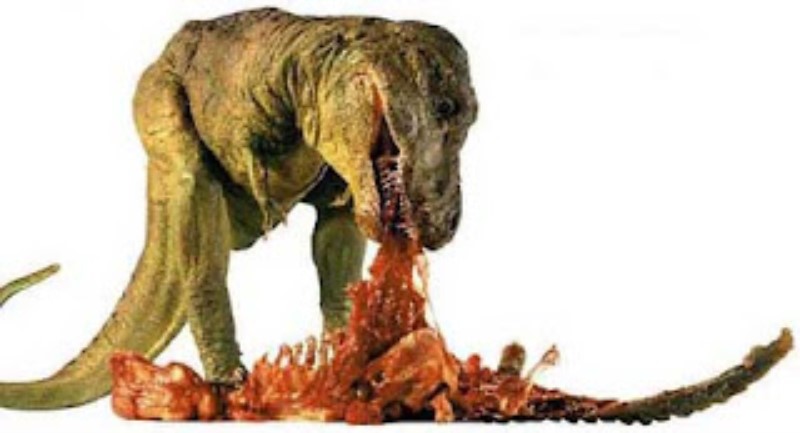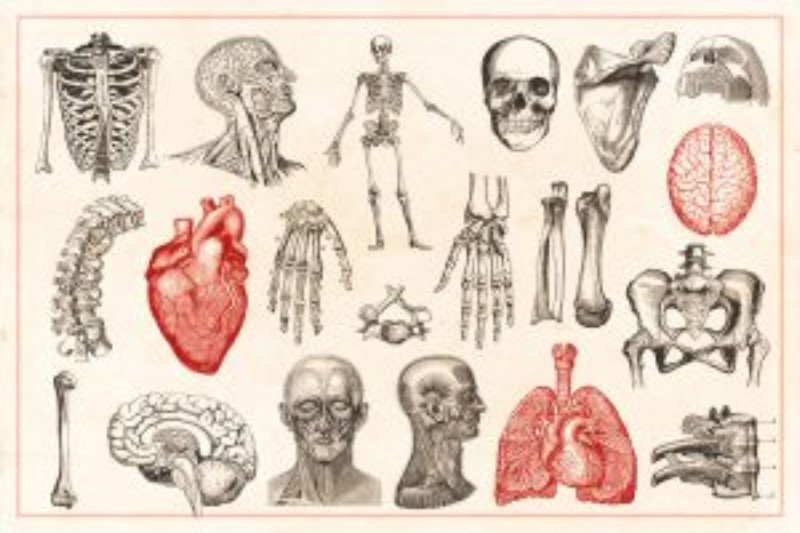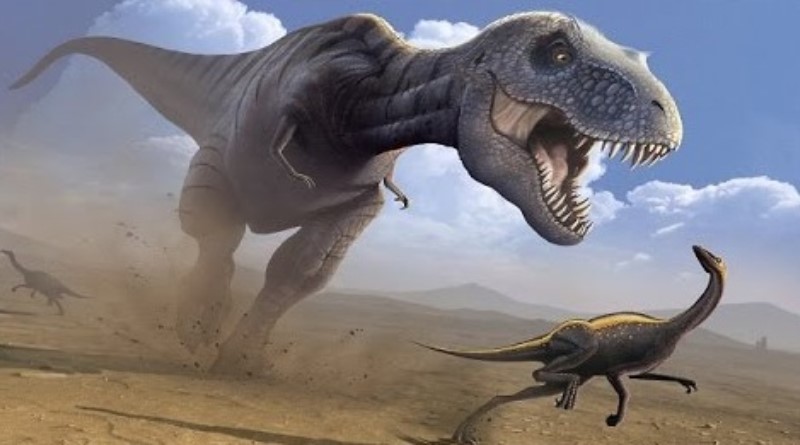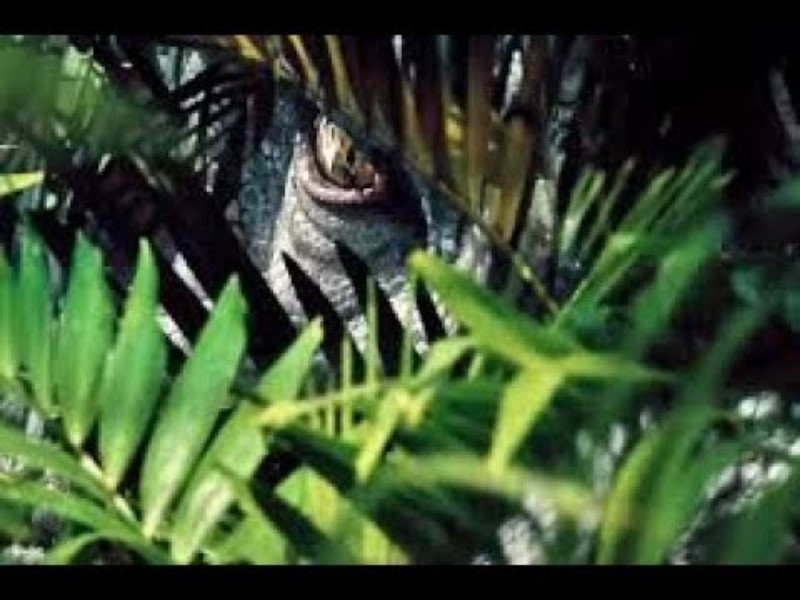

Are you looking for information about the Alta rex dog breed? You came to the right place! In this article, we will tell you everything you need to know about this dog breed that has gained popularity in recent years.
From its origin to its physical and temperamental characteristics, we invite you to continue reading to learn more about the Alta rex and discover if this breed is the right one for you.
Plus, we’ll provide you with some helpful tips for caring for your new furry companion and making sure they lead a healthy and happy life. Do not miss this complete guide on Alta rex breed dogs!
History and characteristics of the Rex dinosaur

The Rex dinosaur, also known as Tyrannosaurus Rex, lived approximately 68 million years ago during the Cretaceous period in what is now North America. It was a bipedal carnivorous dinosaur that could reach up to 12 meters in length and weigh more than 8 tons. Its head was large, with a jaw full of sharp teeth and excellent binocular vision, making it a deadly predator. Despite its size, it could run at speeds of up to 20 mph.
Name’s origin
The name Tyrannosaurus Rex means “Tyrant Lizard King” in Latin. It was named like this in 1905 by paleontologist Henry Fairfield Osborn, who described the remains of the first skeleton found in Montana, United States. Since then, the T-Rex has become one of the most iconic and recognized dinosaurs in the world.
Discovery of the first fossils
The first remains of T-Rex were discovered in 1874 by paleontologist Arthur Lakes in Colorado, United States. However, they did not realize what they had found, and it was the discovery of the first complete skeleton in Montana, 31 years later, that allowed scientists to better understand the anatomy and physiology of this species. Since then, numerous T-Rex fossils have been found in different parts of the world, allowing paleontologists to study their history and evolution.
How the Rex was discovered and its importance in paleontology
The discovery of the Rex dinosaur dates back to 1902, when paleontologist Barnum Brown found the first remains in Montana, United States. Since then, this dinosaur has been one of the most researched and studied in the world, thanks to its enormous size and its role in the food chain of the Cretaceous period.
Importance of the Rex in paleontology
The Rex is one of the most iconic and representative dinosaurs of the Mesozoic era, and its study has been key to understanding the evolution of the giant reptiles that inhabited our planet millions of years ago. In addition, their anatomy and physiology have been the subject of numerous investigations and experiments, which have contributed to a better understanding of how these animals functioned.
Rex Study Techniques
To study the Rex, paleontologists use different techniques and tools, such as computerized axial tomography, 3D reconstruction, or isotope analysis. Thanks to these techniques, a large amount of information has been obtained about the anatomy, physiology and behavior of this dinosaur, which has allowed us to have a more precise image of what it was like in life.
Differences between the Rex and other carnivorous dinosaurs

The T-Rex is one of the most well-known and recognizable dinosaurs in history, but how is it different from other carnivorous dinosaurs? Here are some of the main differences:
speed and agility
Compared to other predators of its time, the Rex was a rather heavy and clumsy animal. Although it could reach speeds of up to 40 km/h, it was not capable of turning quickly or making very sudden movements, which made it vulnerable to smaller and more agile prey.
size and strength
The T-Rex was one of the largest dinosaurs ever discovered, with a length that could reach 12 meters and a weight of up to 7 tons. In addition, its jaw was extremely strong, capable of exerting a pressure of over 8,000 pounds, allowing it to break bones and shred its prey with ease.
Another of the differences that made it more formidable than other carnivores was its sight and smell. The Rex had exceptionally sharp vision and highly developed olfactory receptors, which allowed it to detect prey at great distances and hunt more efficiently.
In short, while the T-Rex was not the fastest or most agile predator of its day, its size, strength, and highly developed senses made it one of the most fearsome and deadly predators of all time.
Rex Anatomy and Physiology

The Rex dinosaur, also known as the king of dinosaurs, was one of the largest and most feared predators of its day. Their anatomy and physiology were perfectly adapted for hunting and survival in a prehistoric world.
Anatomy
The Rex was around 12 meters long and weighed around 5 tons. It had a strong, bony skull, with a jaw lined with sharp, serrated teeth that enabled it to tear through the flesh of its prey. Its front limbs were short and strong, while the hind legs were long and muscular for running and striding.
Physiology
The Rex was a warm-blooded animal, which means that it maintained a constant body temperature thanks to its high metabolism. His lungs were large and efficient, and his heart had an enormous capacity to pump blood through his body. It is believed that he had keen eyesight and nose, which allowed him to detect his prey at great distances.
In short, the Rex dinosaur’s anatomy and physiology were exceptional and made it one of the most successful predators of its time.
Theories about the extinction of the Rex and other dinosaurs

Since the extinction of the dinosaurs, scientists have debated the possible causes. Here are some of the more popular theories:
impact of an asteroid
The asteroid impact theory holds that a giant object impacted Earth about 65 million years ago, causing a mass extinction of dinosaurs, including the Rex. Evidence supporting this theory includes the presence of a worldwide layer of clay, which contains high concentrations of iridium, a common element in asteroids.
Climate change
Another popular dinosaur extinction theory argues that climate changes, such as global cooling and increased volcanic activity, led to the gradual disappearance of dinosaurs, including the Rex. Evidence supporting this theory includes analysis of growth rings in trees and ice sheets, which suggest a gradual decrease in temperature.
Despite the fact that these theories are the most accepted, there are still numerous hypotheses about the extinction of dinosaurs that are debated in the scientific community.
Curiosities and interesting facts about the Rex

The Rex dinosaur is one of the most famous extinct animals to have lived on Earth. Here are some interesting facts and curiosities about this animal:
Size and weight
The Rex is considered to be one of the largest dinosaurs that ever lived, reaching a length of up to 12 meters and a weight of around 6 tons. In addition, its head was huge, with a length of more than a meter.
Scientific name
The Rex’s scientific name is Tyrannosaurus Rex, which means “Tyrant Lizard King.” This name was given by paleontologist Henry Fairfield Osborn in 1905, and has been widely used to refer to this animal ever since.
pneumatic bones
Unlike other dinosaurs, the Rex had pneumatic bones, which means that some of its bones had air-filled cavities instead of bone marrow. This feature made him lighter and could breathe easier.
Speed
Although the Rex is thought to be a slow and clumsy animal, some studies have suggested that it could run at speeds of up to 40 kilometers per hour.
Teeth
The Rex had enormous teeth, with a length of up to 20 centimeters and a shape similar to that of a banana. These teeth were perfect for crushing bone and meat, and its bite was capable of generating a force of up to 12,000 pounds per square inch.
Movies and series that have included the Rex as a main character

Jurassic Park
Jurassic Park It is one of the most iconic movies that have included the Rex as a main character. It was released in 1993 and was a resounding success at the box office, which led to several sequels and adaptations. In the film, the Tyrannosaurus Rex is introduced as one of the main attractions at a dinosaur theme park, but then escapes from its enclosure and causes chaos on the island. The depiction of the Rex in the film was very realistic and based on the anatomy and physiology of the dinosaur.
Walking with Dinosaurs
Walking with Dinosaurs is a BBC documentary series that aired in 1999. The series uses animatronics and special effects to recreate the lives of dinosaurs, including the Tyrannosaurus Rex. In the series, the Rex is presented as a solitary predator that stalks and hunts other dinosaurs. The depiction of the Rex in the series was highly detailed and based on the paleontological information available at the time.
The Land Before Time
The Land Before Time is a 1988 animated film that follows the adventures of a group of young dinosaurs, including a Tyrannosaurus Rex named Sharptooth. In the movie, Sharptooth is a fierce antagonist who threatens the main characters and pursues them throughout their journey. Although the film’s portrayal of the Rex is a bit simplistic, it was important in introducing children to dinosaurs and their history.
